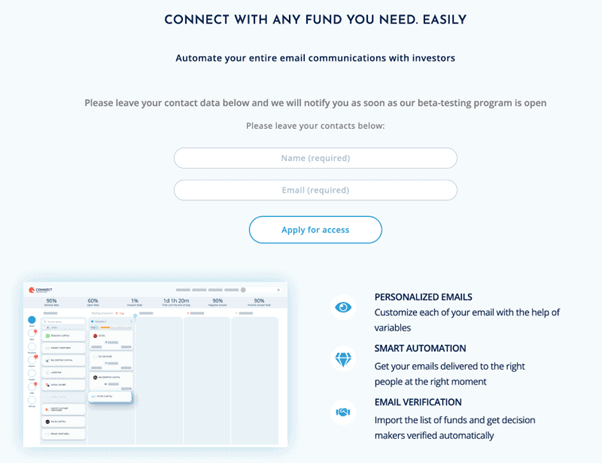Are you looking for ways to gain more qualified leads, win more deals, and increase revenue at every stage of your sales funnel? Then, you’ve come to the right place.
In this article, we’ll walk you through the traditional B2B sales funnel, why it doesn’t work anymore, and how to build a sales funnel that will actually help you get closer to your potential customers and generate more revenue for your business.
What Is a Sales Funnel?
A sales funnel represents how a prospect goes from when they contact you to when they buy your product or use your service. As this prospect moves through the sales funnel, they become more familiar with your business and offerings.
Traditionally, a sales funnel includes four stages: awareness, interest, desire, and action. But this approach doesn’t work anymore.
Why Sales Funnel is Important?
- It helps understand the customer journey and what makes them buy.
- It allows you to analyze what’s working and what isn’t and develop the right strategies to improve conversion rates.
Sales Funnel Stages
A traditional sales funnel often has three steps:
- Awareness and discovery: A potential customer is aware of their problem and starts researching it. They notice your business and what you offer.
- Interest and consideration: They’re researching different solutions and thinking them over.
- Decision: The customer is ready to buy.
How Is the Sales Funnel Evolving?
Covid-19 has changed many things, and one of them is consumer behaviors. Previously, a buyer may want to meet a seller face-to-face to seek information about a product and then ask for a proposal via post. But now, more and more people use email, social media, videos, and other digital channels to interact with a business.
According to McKinsey, over 75% of buyers and sellers say they now prefer digital self-service and remote human engagement over in-person interactions. This finding is also aligned with Gartner’s research, showing that B2B buyers spend only 17% of the total purchase journey with sales reps.
In another study, Kearney suggested that businesses have to update their sales funnel to deal with challenges like increased customer expectations on products and services, demanding omnichannel communications, new entrants with alternative offerings, unconventional business models, and more.
So, how can you keep up with these changes and successfully adapt to them? The answer is adopting technology to segment audiences, create innovative value packages, send personalized email campaigns, track sales opportunities, and more. Kearney emphasized that companies that apply technological solutions about revenues and sales productivity will grow faster than others.
Sales Funnel vs Revenue Funnel: What’s the Difference?
A sales funnel isn’t the same as a revenue funnel.
While a sales funnel represents stages that a prospect goes through toward becoming a customer, a revenue funnel focuses more on activities that help shorten the sales cycle and close more deals. In other words, when it comes to a revenue funnel, it’s all about how to have more customers and more revenue in the shortest time possible.
Sales Funnel vs. Marketing Funnel
Many people use a sales funnel and a marketing funnel interchangeably. But there is a slight difference between these terms.
A marketing funnel focuses on identifying and capturing leads through marketing communications. Meanwhile, a sales funnel describes a lead’s path from learning about your business to becoming an actual customer.
Sales Funnel vs. Sales Pipeline
A sales funnel represents the number of open deals and conversion rates at a given time. On the contrary, a sales pipeline is a set of actions your sales reps take to move a prospect down the funnel.
Types of Sales Funnel
There are several different types of the sales funnel. Here are some:
- Lead magnet funnel: Offering a freebie to collect email addresses and get prospects into a mailing list. This is the simplest and most common sales funnel type.
- Quiz or survey funnel: Inviting prospects to take a quiz or survey and then take them to the right funnel based on their answers to pre-defined questions.
- Demo funnel: Offering live demo or personalized demo. This is great to show off your products and build trust with new prospects.
- Free trial funnel: Allowing prospects to trial products for free within X days.
- Webinar funnel: Inviting people to join your webinar events for free or for a small fee. During the event, you communicate with prospects, address objections, and convince them to buy your other products.
How to Build Your Sales Funnel in Salesforce?
Here are four steps for building a successful revenue-focused sales funnel:
Step 1: Ensure your sales team and marketing team are on the same page. Involve them in the process of making business decisions, building sales processes, lead generation strategies, workflows, and others.
Also, invest in the right revenue intelligence platform and provide your teams with proper training so they can know how to take advantage of the technology to do their job better.
Step 2: Create your sales cloud CRM objects based on Salesforce’s standard sales core objects, i.e., leads, contacts, accounts, and opportunities.
Step 3: Determine your Salesforce lead and opportunity stages, including persons in charge, the inputs, and outputs of each stage. More on this later.
Step 4: Define and create your reports. Ensure your reports give you insights into new leads over a period of time, conversion rates, how much time it takes to convert a lead, and how long someone has been in a lead or opportunity status.
How to Manage Your Sales Funnel Stages for Revenue Generation?
Every business may have different sales funnels for revenue generation. But most of the time, a typical sales funnel can have the following stages:
1. Prospecting
In this stage, sales reps use email, social media, public relations, and other promotional activities to deliver messages to the target market. From that, they identify and contact potential sales leads. Some businesses might call this stage lead generation.
2. Nurturing
In this stage, sales reps develop and strengthen relationships with potential sales leads through marketing and communication efforts. They try to identify what those prospects want, what their problems are, and provide helpful information.
A successful lead nurturing program should help build trust, build brand awareness, and maintain a good connection with prospects until they purchase.
3. Identifying Marketing Qualified Lead (MQL)
This stage aims to identify marketing-qualified leads who show interest in your business and engage in your communication campaigns. These leads may download a free trial of your product, contact you for a demo, subscribe to your monthly newsletter, or click your Facebook ad.
4. Identifying Sales Qualified Lead (SQL)
In this stage, sales reps determine MQLs who are more likely to become customers (a.k.a. sales qualified leads). These prospects show signs that they’re ready to talk with your sales reps to get more information about your product that helps inform their buying decision.
5. Determining Opportunity
The opportunity stage is where you start forming a deal. In this stage, it’s important to adopt sales funnel tools like Revenue Grid as it’ll give you actionable insights into your SQLs and how you can convert them quickly.
For example, Revenue Grid provides signals and deal guidance that provides your reps with recommendations and an actionable list of next steps to move deals forward. These suggestions are powered by artificial intelligence (AI) and updated in real-time, so you’ll always stay on top of your sales funnel and never miss any opportunities.
Revenue Grid’s team analytics is another tool you can use to improve sales performance. It allows you to track what your sales reps are doing, who are the top performers, and how you can use sales coaching to help your reps work more effectively.
6. Closing Deals (Closed-won Opportunity)
A closed-won opportunity means you win a deal; in other words, a prospect fulfills the payment and starts using your product. You then should provide great onboarding experiences, customer support, and other services you mention in your proposal.
Note that if a lead isn’t ready to purchase, you should recycle the lead. This means you bring them back to the lead nurturing stage and continue to nurture them until they’re sales-ready. If there is no chance to convert this lead, you should move them to a disqualified or deferred status.
Now that you’ve understood how to create a sales funnel for revenue generation. Contact us for a Revenue Grid demo, and we’ll show you how it can become a game-changer for your sales team and your business.
Sales Funnel Examples
As said earlier, one of the most effective and widely used ways is driving email opt-ins using lead magnets.
For example, Unicorn Nest uses a notification bar at the top of the website to invite website visitors to subscribe to their mailing list and get early access to their new email outreach tool.

When you click Learn More, you’ll be directed to a landing page where you can see all information about their new tool and a form to sign up.

With new subscribers collected through this bar, Unicorn Nest can create an automated email flow to target them and personalize messaging to turn them into customers.
How to Optimize Sales Funnel
Consider the following tips:
- Understand your target audiences: The more you know about them, the higher chance you can bring them to your funnel.
- Analyze your landing page: Most of the time, you’ll direct people to your landing page, where you showcase your offer and capture their email addresses. Take time to write compelling copy and produce engaging visuals to entice them.
- Take advantage of social proof: Social proof like reviews, ratings, and testimonials are great for building trust with new audiences. Display them on your website, landing pages, social media, and other places customers can visit to learn about you.
Sales Funnel FAQs
What is B2B Sales Funnel?
A B2B sales funnel is a sequence of stages a B2B buyer goes through to become a customer.
What is SaaS Sales Funnel?
A SaaS sales funnel is a term used by SaaS companies. It depicts how someone learns about a product, moves past a free trial or demo, and becomes a paying user.
What Does a Sales Funnel Look Like?
As stated above, a sales funnel includes three main stages: (1) awareness and discovery, (2) interest and consideration, and (3) decision.
Now that you’ve understood sales funnel definition and how to create a sales funnel for revenue generation.
See how Revenue Grid can become a game-changer for your revenue team.
